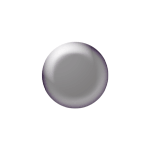Stay on designated trails
|
|
|
To preserve soil and native plants.
To keep mature trees healthy.
|
|
|
|
Natural soil needs to stay aerated in order to deliver water and nutrients to plant roots and to drain well.
Foot traffic compacts the soil and damages plant surface roots. Repeat traffic increases the compaction, exposing deeper roots and reducing water absorption into the ground.
On slopes, compaction can change water runoff patterns and speed up runoff, which can begin the process of erosion.
|
|
|
|
To minimize contact with larger wildlife.
|
|
|

| Keep dogs on trails
|
|
|
|
To protect wildlife and habitat.
To prevent stream bank erosion and loss of vegetation.
To protect fish.
|
|
|
|
Small animals and birds live in and nest in the forest understory.
The majority of migratory songbirds nest less than 12 feet from the ground in native shrubs or "brush".
Young salmon and trout live in shallow pools in the creek.
|
|
|

| Stay out of streams
|
|
|
|
To avoid stirring up silt or disturbing organisms and fish.
|
|
|
|
Silt can accumulate in fish gills or smother fish eggs buried in the stream.
Other smaller lifeforms can be crushed or damaged.
Fish can become overstressed if frequently disturbed.
Spawners can die if overstressed, because their energy reserve cannot be replenished once they enter fresh water to spawn.
|
|
|

| Give wildlife a wide berth
|
|
|
|
To avoid stressing them and to protect yourself.
|
|
|
|
Black bear, coyote, deer, skunk, and raccoon are permanent residents in all the ravines and natural areas.
Respect their habitat.
|
|
|

| Take away people food and man-made litter and pet waste
|
|
|
|
To avoid contamination of water and soil, and to protect wildlife.
|
|
|
|
Doggy-doo can harbour parasites which can spread to animals and people. It becomes more harmful the longer it sits on the ground.
|
|
|
|
To avoid attracting wildlife.
|
|
|
|
People food can attract bears. Animals which develop a taste for these foods can become habituated to people, to the point where they can become aggressive and a safety threat.
|
|
|

| Leave man-made objects if they are imbedded in the creek
|
|
|
|
To avoid stirring up silt or displacing fish which may be using the object for shelter.
|
|
|
|
Shopping carts and wood may look unattractive, but it may be serving a useful purpose.
Contact North Vancouver City or North Vancouver District environment staff to let them know about the problem.
|
|
|

| Report any ENVIRONMENTAL PROBLEMS immediately
|
|
|
|
To speed correction or repairs.
|
|
|
|
Problems considered urgent include poaching, polluted stream water, contaminants seeping into a creek or storm drain.
|
|
|

| Obey the "No Fishing" laws for these creeks
|
|
|
|
To conserve fish and their spawning and rearing habitat.
|
|
|
|
Native salmon and trout are protected species because their populations are low. The individuals in each creek are important for their biodiversity.
|
|
|
|
Fishing is permitted only in the Capilano River, Seymour River and Lynn Creek AND only in season. If caught, wild salmon must be released unharmed.
|
|
|

